All about Caravan Tyres
Terry Owen, our resident expert, looks at caravan tyres
Compared to car tyres, those fitted to caravans would appear have an easy life. With no acceleration or steering to do and only a fraction of the mileage you might think they would last forever.
The problem is the day a tyre is made a clock starts to tick - and that clock is the ageing of the rubber compound from which the tyre is made. Oxygen in the air and sunlight combine to break down its molecules. The warmer it is the faster this process happens.
The effect is to reduce the strength and elasticity of the rubber and to weaken the tyre. Consider also that caravans may be stored outside in full sun for weeks or months on end without turning a wheel. This can lead to the development of flat spots and uneven stresses within the tyre.
When to change
The generally accepted rule within the caravan industry is that tyres should be changed when five years old, even if they appear in perfect condition. Indeed, in The Netherlands, a caravan will not pass its MOT if a tyre is six years old or more.
Failure to observe this advice can result in a blow out and possibly severe damage to the caravan through flailing strips of rubber penetrating the bodywork.
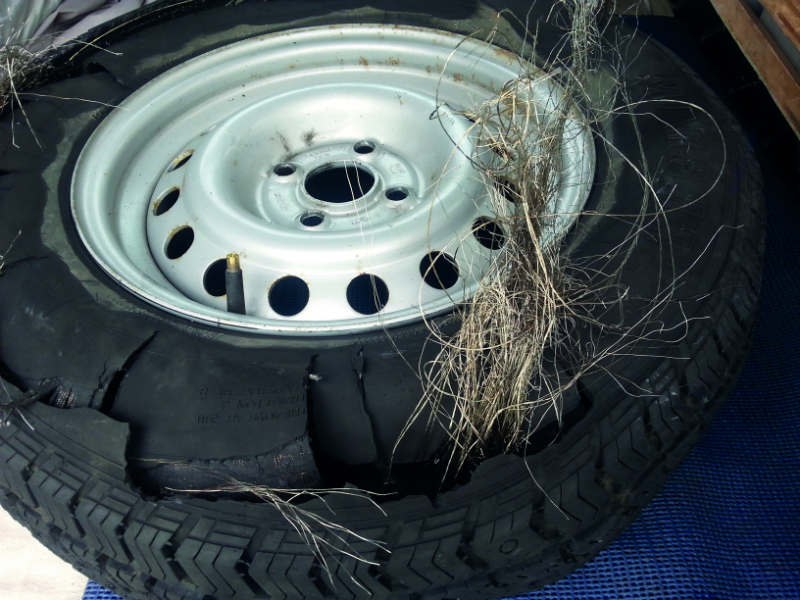
Above: This tyre looked in perfect condition before the blow out but it was more than 10 years old
Heavy, single axle, caravans are particularly vulnerable to the effects of tyre neglect especially if regularly used in mainland Europe during the summer months. As a guide, any tyre running at 50psi or more should be checked regularly for signs of deterioration from 3 years old.
How to tell the age of a tyre
All tyres are marked with a coded date of manufacture usually located in a 'window' on the tyre sidewall. The first two digits represent the week of manufacture and the second two the year. The numbers may be preceded with letters as here.
The code may not be on both sidewalls so, if you can't see it, try the other side of the tyre.
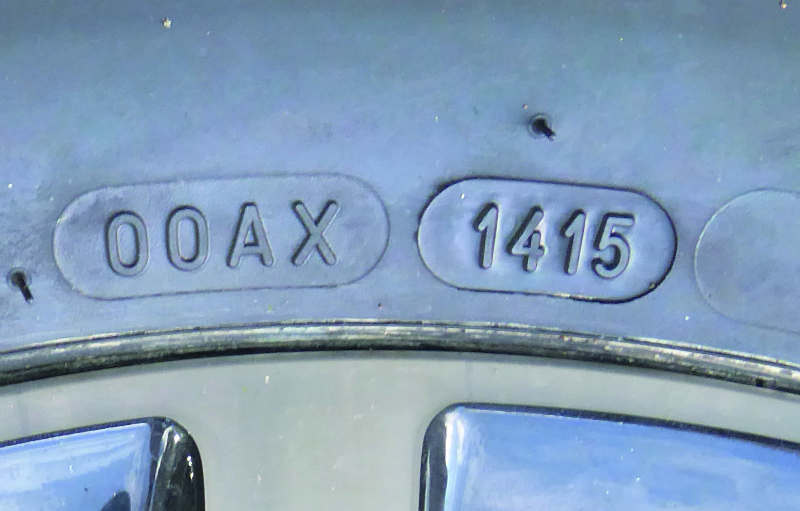
Above: This tyre was manufactured during week 14 of 2015
Understanding tyre ratings
There is a myth that caravan tyres are different to car tyres and that car tyres should never be fitted to a caravan. It's true that caravan tyres, particularly those for single axle caravans, are more akin to van tyres because of the higher loads they have to carry. However, what matters is the tyre's load rating, also referred to as load index. This should always be sufficient to cope with the maximum weight of the vehicle.
Take for example a single axle caravan with a maximum weight (MTPLM) of 1500kg. Each wheel must carry a load of half this, i.e. 750kg. The caravan manufacturer will apply a safety margin of say 20%, so the tyres will probably have a load rating of 900kg. In the table below you can see that this figure equates to a load index of 104.
| Load Index | KG | Load index | KG | |
|---|---|---|---|---|
| 76 | 400 | 92 | 630 | |
| 78 | 425 | 94 | 670 | |
| 80 | 450 | 96 | 710 | |
| 82 | 475 | 98 | 750 | |
| 84 | 500 | 100 | 800 | |
| 86 | 530 | 102 | 850 | |
| 88 | 560 | 104 | 900 | |
| 90 | 600 | 106 | 950 |
A typical tyre for this situation might well be specified as 185 R14 104. This means it has a width of 185mm, is designed for a 14-inch rim and has a load index of 104. There may be another number after the width e.g. 185 65 R14. The second number is the aspect ratio of the tyre, here showing the tyre has a height to width ratio of 65%.
When replacing a tyre it is vital to ensure the new tyre has a load index of at least that specified by the caravan manufacturer. It can be tempting to go for a higher rating but it shouldn't be necessary.
Don't be tempted to fit a wider tyre to get a higher load rating as it will also have a larger diameter and may end up fouling the wheel housing, What's more, with a twin axle caravan, there may be little or no space between the tyres. Our advice would always be to stick with the tyre size and rating specified in the caravan's handbook.
Where caravans are concerned the speed rating of the tyre is not critical as you're unlikely to exceed the limit of any tyre you buy. The rating is shown by a capital letter in the range N to Y with N standing for 87 mph and Y for 186mph. The letter often follows the load marking, e.g. 104 T.
It's also important to ensure the tyres on a given axle are identical and, for that reason, it is good practice to replace them both together. This will help ensure the caravan reacts evenly to any forces it is subjected to, including those brought about by crosswinds.
Budget vs big name
There's nothing wrong with going for new budget tyres if you fancy saving some money. It's not like a car where you may feel any difference in performance. Budget tyres are often made in countries with lower manufacturing costs and can offer genuine savings.
Be careful if you are offered retread or remould tyres. These are made from worn tyres with otherwise good carcasses given new treads. Whilst improving standards over the years mean these tyres are more reliable than they used to be the fact remains the carcass may already be several years old.
Where to buy
If you're happy to remove and refit the wheels yourself then taking them to your local tyre dealer could be the best bet. Before you start make sure you have a good torque wrench and know what setting to use. Alternatively choose a company like Kwik-Fit or Tyres on the Drive that will come to you.
Here are some alternative online tyre companies to compare prices:
| Retailer | Website |
|---|---|
| My Tyres | www.mytyres.co.uk |
| Just Tyres | www.justtyres.co.uk |
| Tyres Pneus Online | www.tyres-pneus-online.co.uk |
| National Tyres and Autocare | www.national.co.uk |
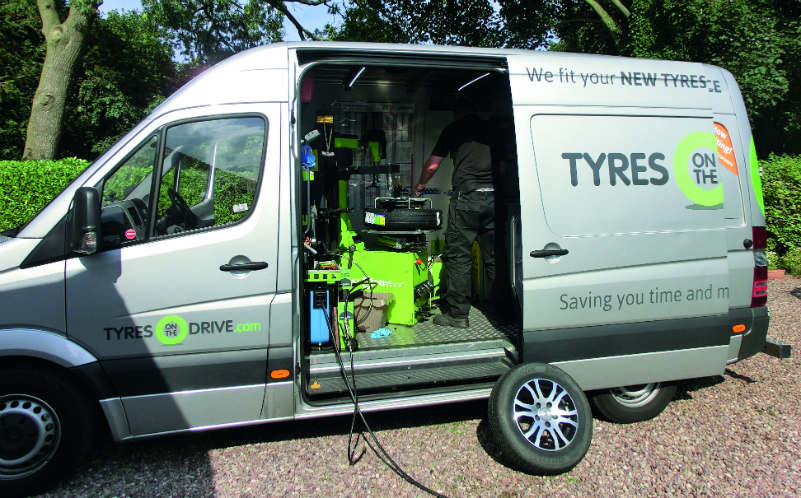
Tyre safety bands
It's a fact that tyre fitters hate safety bands because they make tyre changing much more difficult. The band must be removed before the tyre can be taken off and then refitted once the new tyre is on the rim. All this takes time so expect to pay a premium on the fitting charge.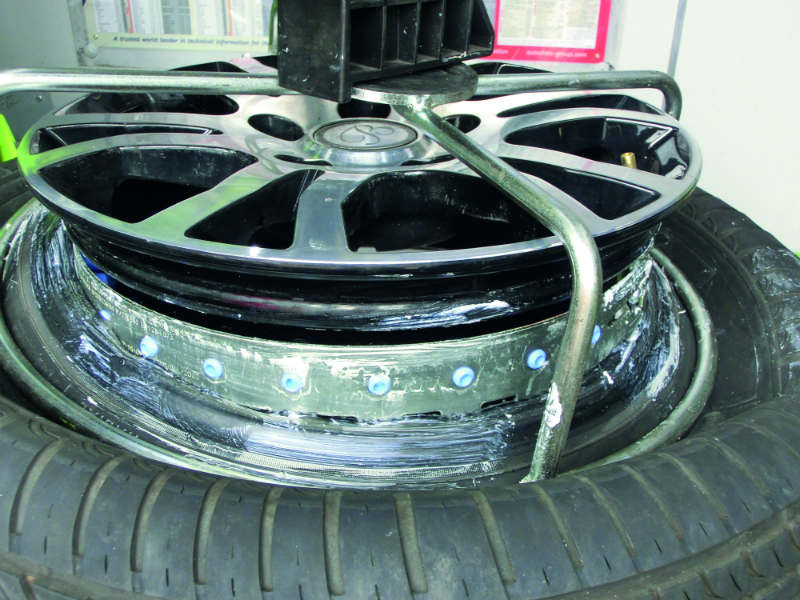
Wheel balancing
Wheel balancing is not strictly necessary as you will not feel any imbalances when towing. If however you want to ensure your caravan and its contents have as smooth a ride as possible it's worth asking for the wheels to be balanced.
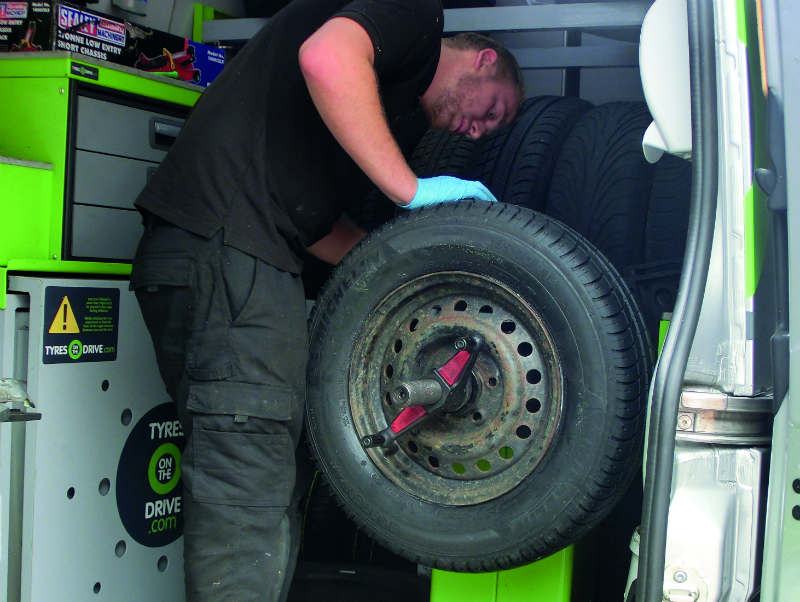








Recent Updates
Caravan bike racks: a complete guide
Exploring the beautiful surroundings while on a caravan trip is undeniably one of the greatest joys of the adventure. While you have options like ...
Caravan chassis: all you need to know
A caravan chassis is a skeletal frame that runs from front to back, supporting the body and linking the ...
Caravan cooking recipes
Caravan cookery inspirational ideas. No need to stress out in the kitchen with these quick and easy ...
Caravan satellite dish guide: everything you need to know
Few holiday types can rival the escapism of the humble caravan, but we all love to sit back and relax in ...
Caravan insurance: all you need to know
Navigating the world of caravan insurance can feel like a daunting task. Fear not, as this comprehensive ...
Caravan tyres: everything you need to know
In this tyre guide, we'll explain everything you need to know about looking after your caravan tyres and ...
Caravan solar panels: all you need to know
Whether you dream of roaming off-grid or just fancy reducing your carbon footprint, fitting solar panels to ...
Caravanning with dogs: all you need to know
Explore caravanning with dogs with our comprehensive guide covering tips on accessories for dogs, ...
How to set up a caravan: all you need to know
Setting up your caravan on a campsite pitch is just a sequence of actions. They’re second nature to ...
Caravan showers: all you need to know
In this guide, we’ll discuss the different types of showers, how they work, and how to fit an external shower ...
Other Articles
Towing a caravan: all you need to know
Towing a caravan may seem daunting initially, but a few simple tips can make the journey enjoyable and stress-free. Towing 1,500kg or so of steel and ...
Towbars & towballs: all you need to know
Flange, detachable, swan neck, retractable – towbar technology choice is bewildering. Don’t worry. We’ll ...
Caravan WiFi: everything you need to know
Caravan holidays are the ultimate way of getting away from it all, although we sometimes need a link to the ...
Buying a caravan: what you need to know
Let us guide you through some of the complicated things to think about when first looking at buying a ...
Caravan awnings: a buyers' guide
Caravan awnings are a fantastic addition to any caravan as they are one of the simplest, quickest and most ...
Caravan electrics: avoid tripping out
All caravan owners have overloaded their mains supply at some time. Here’s how to master caravan electrics ...
Caravan heating systems: a quick guide to caravanning warmth
When winter is here, you’ll be glad of a decent caravan heating system if you’re out touring. Here’s how the ...
Caravan damp: a complete guide
There's little more guaranteed to strike fear into the heart of a caravan owner than the word 'damp'. But if ...
Caravan jockey wheels: the definitive guide
A well-functioning caravan jockey wheel can make all the difference to manoeuvring away from the towcar, ...
The ultimate guide to caravan layouts
Choosing the right layout or floorplan of your caravan is an all-important part of the buying process – find ...